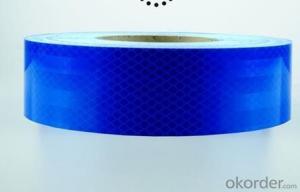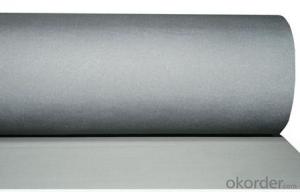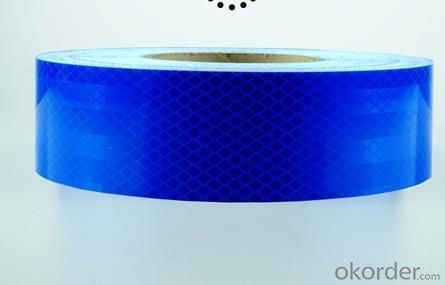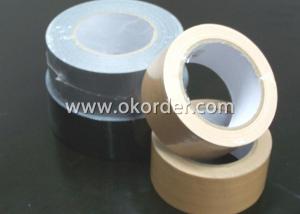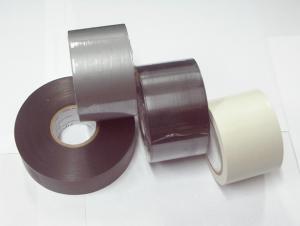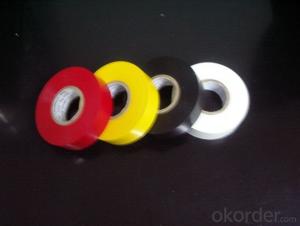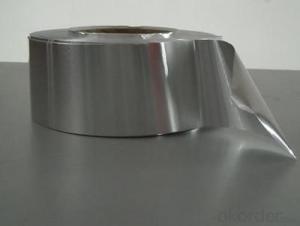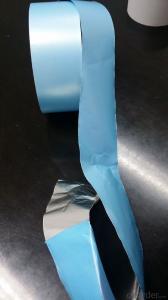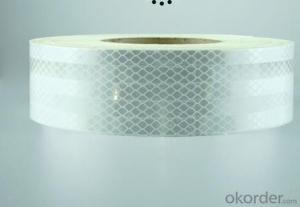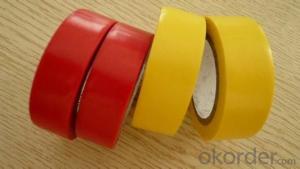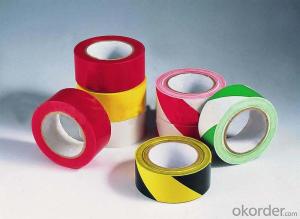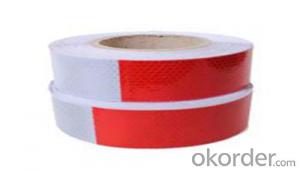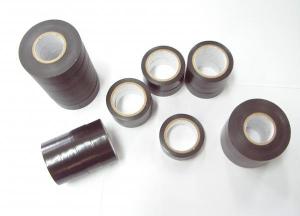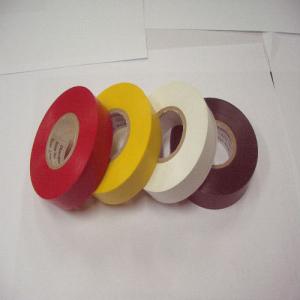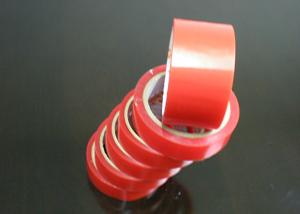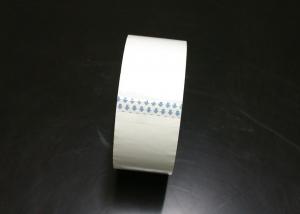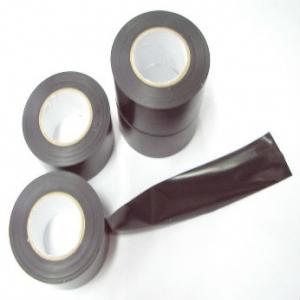Patterns (Format) | Width | Length | DOT-C2 Marking |
6” white x 6” red | 1” <W<49” | 150FT or OEM | Yes |
7” white x 11” red | 1” <W<49” | 150FT or OEM | Yes |
Solid white | 1” <W<49” | 150FT or OEM | Yes |
Solid red | 1” <W<49” | 150FT or OEM | Yes |
Solid yellow | 1” <W<49” | 150FT or OEM | Yes |
6” white x 6” red Perforating | 1” <W<49” | 150FT or OEM | Yes |
7” white x 11” red Perforating | 1” <W<49” | 150FT or OEM | Yes |
Solid white Perforating | 1” <W<49” | 150FT or OEM | Yes |
Solid red Perforating | 1” <W<49” | 150FT or OEM | Yes |
Solid yellow Perforating | 1” <W<49” | 150FT or OEM | Yes |
6” white x 6” red Customized Logo | 1” <W<49” | 150FT or OEM | Yes |
7” white x 11” red Customized Logo | 1” <W<49” | 150FT or OEM | Yes |
7” white x 11” red | 2” | 18” Strip | Yes |
6” white x 6” red | 2” | 12” Strip | Yes |
PhysicalPerformance
The following technicalinformation should be considered typical only and should not be used forspecification purposed.
Physical PropertyAdhesion (ASTM D4956)
Test Method: 90°C HangingWeight
FMVSS 108 Requirements:< 2 Inch (55 mm) Movement Shrinkage (ASTM D4956)
Test Method: 9x9 InchPanel
FMVSS 108 Requirements:< 1/8 Inch change on
Flexibility
Test Method: Wrap arounda 1/8” mandrel @ 32°F (0°C)
FMVSS 108 Requirements:No Cracking Impact Resistance
Test Method: 100 In-Lb,5/8 Inch Tip
FMVSS 108 Requirements:No Damage Outside Impact
Chemical Resistance
Test Method: (SAE J1967)
Test Result: Not Affectedby toluene, #2 diesel fuel, gasoline (Leaded) Kerosene, TSP Detergent, Xylene,Dilute Metal Brighteners
Corrosion Resistance
Test Method: (ASTM B-117Salt Spray)
Test Result: No Effect1000 Hours
Minimum Application Temp.: 60°F (150°C)
High Pressure Wash
Test Method: 45° Angle,1200 psi, 8 Inch Away
Test Result: No PeelingOff
RetroreflectivePerformance
Reflective Material –Vehicle Conspicuity Markings 6”x6 # HI-INT-180012 conforms to the photometryrequirements of GRADE DOT-C2 showed in the following table when testedaccording to the retro reflective sheeting photometry procedure stated in FMVSS108 Appendix G.
FMVSS 108 Retro Reflective Sheeting Photometry Requirements | |||||||
OBSERVATION ANGLE (degrees) | ENTRANCE ANGLE (degrees) | MINIMUM PERFORMANCE | |||||
GRADE DOT-C2 | GRADE DOT-C3 | GRADE DOT-C4 | |||||
WHITE | RED | WHITE | RED | WHITE | RED | ||
cd/lux/sq.m. | cd/lux/sq.m. | cd/lux/sq.m. | cd/lux/sq.m. | cd/lux/sq.m. | cd/lux/sq.m. | ||
0.2° | -4° | 250 | 60 | 165 | 40 | 125 | 30 |
30° | 250 | 60 | 165 | 40 | 125 | 30 | |
45° | 60 | 15 | 40 | 10 | 30 | 8 | |
0.5° | -4° | 65 | 15 | 43 | 10 | 33 | 8 |
30° | 65 | 15 | 43 | 10 | 33 | 8 | |
45° | 15 | 4 | 10 | 3 | 8 | 2 | |
While use ReflectiveMaterial – Vehicle Conspicuity Markings enhances visibility, no reflectivematerial can guarantee absolute visibility, particularly in adverse weatherconditions. Performance will vary depending upon actual use, exposure conditionsand maintenance. Users should test reflective material to satisfy conformanceto their own requirements.
Photometries
Daytime Color (x,y,Y)
The chromaticitycoordinates and total luminance factor of the Vehicle Conspicuity Markingsconform to Table A Daytime Color Specifications Limit (see Note 1).
Color Test – OrdinaryColored Sheeting Conformance to standard chromaticity (x, y) and luminancefactor (Y %) requirements shall be determined by instrumental method inaccordance with ASTM E 1164 on sheeting applied to smooth aluminum test panels.
The values shall bedetermined on a spectrophotometer.
Computations shall bedone for CIE Illuminant D65 and the 2° standard observer (see Note 2)
Table A
COLOR | 1 | 2 | 3 | 4 | Daytime Luminance Limit | |||||
X | Y | X | Y | X | Y | X | Y | Min. | Max. | |
White | 0.303 | 0.300 | 0.368 | 0.366 | 0.340 | 0.393 | 0.274 | 0.329 | 27 | -- |
Red | 0.648 | 0.351 | 0.735 | 0.265 | 0.629 | 0.281 | 0.565 | 0.346 | 2.5 | 15 |
Note 1 : The four pairsof chromaticity coordinates determine the acceptable color in terms of the CIE1931 Standard Colormetric System.
Note 2 : Theinstrumentally determined color values of retroreflective sheeting can varysignificantly depending on the make and model of colorimetric spectrophotometeras well as the color and retro reflective optics of the sheetin
